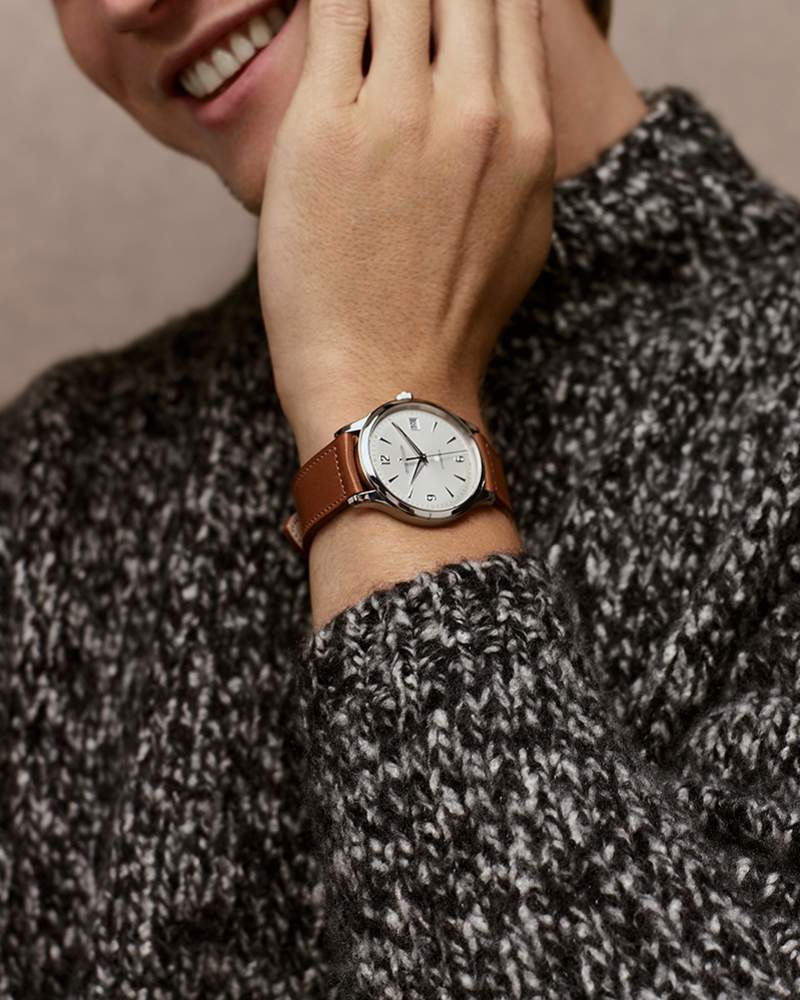THE JOURNAL

Contrary to what you may often read, good watch design isn’t timeless. Everything is a product of its era, and the origins of the wristwatch itself show that: the practical underpinnings of pilot, dive and field watches are present in today’s designs, but they were only devised during early 20th century conflicts. Similarly, with a few notable exceptions, the watch designs of the 1920s and 1930s (and, for that matter, much of the 1970s, 1980s and 1990s) are somewhat alien to modern tastes. And that’s before we say anything about pocket watches.
What is usually on the table when people start talking about “timeless” or “classical” watch design is something such as the Jaeger-LeCoultre Master Control Date – or its more complex sibling, the Master Control Chronograph Calendar, which we’ll come onto in more detail shortly. The design principles enshrined in this watch didn’t spring into existence overnight, but they came together most clearly in the 1950s, a decade in which some of the most significant and influential watch designs launched. Of course, the Master Control collection was introduced by Jaeger-LeCoultre not in the 1950s, but in 1992 – the point is that in looking to evoke a notion of “golden age” watchmaking, and reaffirm the template for an elementary range of watches tied not to any particular functional demand, but aligned with the values of quality, reliability and permanence, the maison had to look to the 1950s.


It’s there in the sans-serif numerals at 12, six and nine, and in the sharply tapered applied arrowheads that mark the other hours. It’s there in the pared-back minute track with its simple geometry of lines and dots; it’s there in the honest-to-goodness silhouette of the case and lugs and the modest proportions of the bezel in relation to the dial. On the Master Control Date, we witness the power of restraint in dial design; on the Master Control Chronograph Calendar the delicate balance required to accommodate a triple-date display with moon-phase and a bi-compax chronograph (even finding enough space for a pulsometer scale running around the outside edge of the dial – another touch associated with 1950s watchmaking, and enjoying great popularity among collectors today) without it becoming confusing to read. In fact, and this is something all the more surprising given Jaeger-LeCoultre’s prolific history as a creator of calibres, this watch is the very first in the brand’s history to combine these specific functions.

The one fundamental difference between these watches and their spiritual forebearers of the 1950s is the quality of the movements within – and the fact you can see their inner workings thanks to the sapphire display case backs. Calibre 759, which powers the Master Control Chronograph Calendar, is an all-new calibre for an all-new combination of complications; it is a column-wheel chronograph with vertical clutch, which is essentially watch-speak for “the very smoothest and most sophisticated operation”, and a 65-hour power reserve. Meanwhile, the Master Control Date runs Calibre 899, a movement present in Jaeger-LeCoultre’s watches since 2005, but significantly upgraded for 2020. A new escapement in silicon improves efficiency and magnetic resistance, while tweaks to tiny details (literally; we’re talking screws and lubricating oils here) combine with a reworked mainspring barrel to improve the movement’s power reserve without needing to increase the watch’s size or profile. Indeed, the whole watch is just 8.78mm thick.


Both of these watches – and every other Jaeger-LeCoultre watch, nowadays – has passed one of the industry’s most stringent quality control tests; a process that was introduced with the range back in 1992 and grew to encompass the brand’s entire output. It was, and remains, a thorough test by any measure: over the course of 1,000 hours (nigh-on 42 days) the watch is checked for accuracy, resistance to temperature changes, shocks and water ingress. New models are subjected to rigorous punishment as part of their production, including fall testing (seeing a fine Swiss watch hit by a pendulum hammer to simulate falling from your wrist to the floor never fails to be a double-take moment, no matter how many times you’ve seen it). All of which goes some way to explain why Jaeger-LeCoultre can offer an eight-year warranty on a watch comprising hundreds of components assembled to the highest standard – and why you can sit back and enjoy how it looks and feels on your wrist without worry.